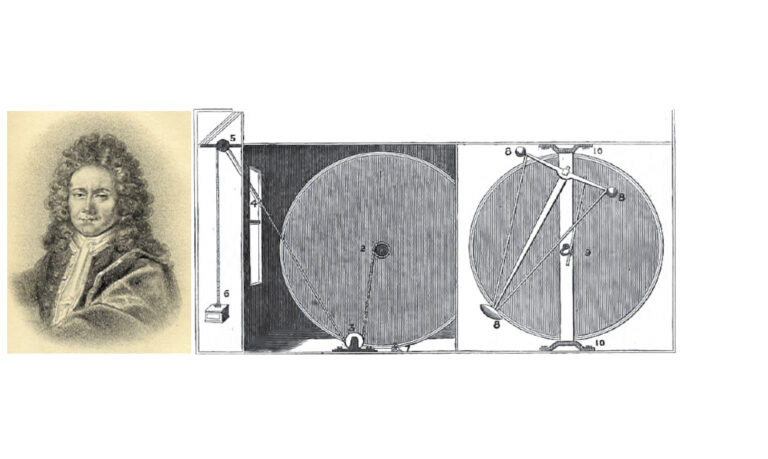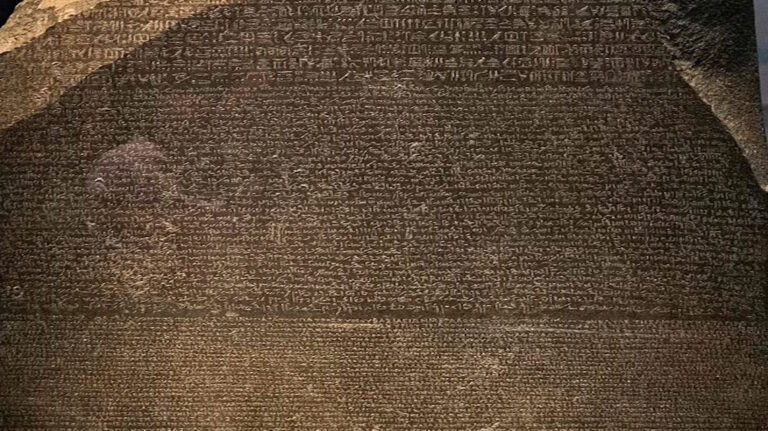The Antikythera Mechanism is often hailed as the world’s first analog computer—a marvel of ancient engineering that was ahead of its time. Found in the remains of a 2,000-year-old shipwreck, this complex device has captivated historians, scientists, and tech enthusiasts alike. But despite its extraordinary capabilities, much of the mystery surrounding the mechanism remains unsolved.
So, what is the Antikythera Mechanism, how does it work, and why is it so significant to our understanding of ancient technology?
Discovery of the Antikythera Mechanism
The story of the Antikythera Mechanism begins in 1901, when a group of sponge divers discovered a treasure trove of ancient artifacts off the coast of the Greek island of Antikythera. The wreck, thought to be from a ship dating back to the 1st century BCE, was filled with statues, pottery, and other goods—but one item stood out. Among the wreckage, they found what appeared to be a strange, corroded lump of bronze. Initially dismissed as a mere piece of junk, this object would soon reveal itself to be far more extraordinary.
It wasn’t until 1951, when British scientist Derek de Solla Price began studying the fragments of the mechanism, that its true nature began to emerge. Using X-rays to peer inside the corroded pieces, Price discovered an intricate system of gears, a complexity never before seen in ancient machinery. Over the years, further analysis and reconstruction revealed that the Antikythera Mechanism was far from an ordinary artifact—it was an astronomical calculator, possibly the most sophisticated machine of its time.
History of the Antikythera Mechanism
The Antikythera Mechanism’s place in history is both fascinating and enigmatic. Its creation likely dates back to the Hellenistic period, a time when ancient Greek scientists and mathematicians were pushing the boundaries of knowledge. The mechanism itself appears to be a blend of science and technology, built for the purpose of tracking celestial movements and predicting astronomical events, such as eclipses and planetary cycles.
Although we cannot be certain who designed or built the Antikythera Mechanism, many experts believe it could have been the work of a Greek inventor or astronomer, possibly a disciple of the famous philosopher Archimedes or the astronomer Hipparchus. These thinkers were known for their work in mathematics and astronomy, and it’s likely that they had the knowledge to create such a device.
How the Antikythera Mechanism Works?
At first glance, the Antikythera Mechanism may seem like an unremarkable lump of bronze, but its inner workings are anything but simple. The mechanism consists of a series of interlocking gears, driven by a hand-cranked system, which worked together to calculate the positions of the sun, moon, and planets.
The most striking feature of the mechanism is its gear system, which is incredibly sophisticated for its time. The device had at least 30 different gears, arranged in a complex system that mimicked the movements of celestial bodies. The front of the mechanism features several dials that display the positions of the sun and moon, while the back of the device includes a more detailed calendar system that tracks the cycles of the planets.
One of the most remarkable aspects of the Antikythera Mechanism is its ability to predict solar and lunar eclipses. Using a system of gears and pointers, the device could calculate when an eclipse was likely to occur, making it a valuable tool for ancient astronomers.
In addition to the astronomical calculations, the inscriptions on the mechanism provide valuable insight into ancient Greek knowledge of timekeeping, the cycles of the moon, and even the Olympic Games. Some researchers believe that the mechanism was not just a scientific tool, but also served a ceremonial or religious purpose, helping ancient Greeks to align their cultural activities with the movements of the heavens.
The Scientific Significance of the Antikythera Mechanism
The Antikythera Mechanism is often described as the first known analog computer, and for good reason. The device combines precision mechanics with sophisticated mathematical principles, showcasing the extraordinary capabilities of ancient Greek technology. The gears used in the mechanism were far more advanced than anything else known to have existed in antiquity—far more intricate than the simple gear systems used in later medieval clocks, and rivaling the technology of the Renaissance.
The mechanism’s advanced design challenges our understanding of ancient technological capabilities. It provides a glimpse into a time when humans were already capable of creating machines that could perform complex calculations and predictions. However, what’s truly fascinating is how the mechanism was lost to history—its technology seemingly forgotten for centuries, until its rediscovery in the 20th century.
The Antikythera Mechanism also raises intriguing questions about other lost technologies. If the Greeks were capable of building such a sophisticated device, what other inventions or knowledge might have been lost to time? The mechanism serves as a testament to the potential of ancient civilizations and the intellectual achievements that have often been overshadowed by the passage of time.
The functions of the Antikythera Mechanism
Expanding on the functions of the Antikythera Mechanism will provide a deeper understanding of its complexity and significance in ancient Greek science and technology. Here’s an expanded breakdown of its functions and the role it played in astronomy, timekeeping, and more:
- Astronomical Calculator
The primary function of the Antikythera Mechanism was to serve as an astronomical calculator. It predicted astronomical phenomena like the positions of the sun, moon, and planets, as well as the timing of eclipses. The mechanism’s gear system was designed to simulate the movements of these celestial bodies, effectively creating a mechanical model of the heavens.
Lunar Phases: The device could track the phases of the moon and predict when new moons, full moons, and other phases would occur. This was crucial for ancient societies that relied on lunar calendars for religious festivals, agricultural cycles, and everyday life. The Metonic cycle (19 years) helped synchronize the lunar and solar years, ensuring that the lunar months aligned with the solar year over time.
Solar and Lunar Eclipses: The Antikythera Mechanism was also designed to predict eclipses based on the Saros cycle (18 years, 11 days, and 8 hours). By adjusting its gears, the mechanism could calculate when and where both solar and lunar eclipses would occur, providing valuable information to ancient astronomers, priests, and even rulers. This function was vital for the scheduling of religious ceremonies and for preparing the public for upcoming celestial events.
- Calendar Systems
The Antikythera Mechanism was closely tied to ancient calendar systems, which were critical for agricultural, civic, and religious purposes.
Lunar Calendar: It could track the phases of the moon, providing an accurate representation of the lunar cycle. The Greeks and other ancient cultures used lunar calendars to plan activities such as harvests, festivals, and other events that depended on the moon’s cycles. The device helped ensure the synchronization of the lunar months with the solar year, using the Metonic and Callippic cycles.
Solar Calendar: In addition to the lunar calendar, the Antikythera Mechanism also kept track of the solar year. It displayed the sun’s position along the zodiac, helping users understand the relationship between the sun’s movement and the seasons. The mechanism used the Olympiad cycle (4 years) to mark significant events, such as the Olympic Games, and it was likely used to determine key agricultural milestones, like the timing of planting or harvesting crops.
- Planetary Movements
The Antikythera Mechanism was also capable of tracking the movements of the five known planets at the time: Mercury, Venus, Mars, Jupiter, and Saturn. These planets were associated with specific celestial bodies and had important roles in both astronomy and astrology in ancient Greece.
Planetary Gear Systems: The mechanism contained a set of rotating gears that reflected the complex orbital movements of the planets. Although the planets’ motions were not as simple as those of the moon or sun, ancient astronomers recognized their periodicity and built the Antikythera Mechanism to calculate their positions over time.
Astrological and Divinatory Uses: The ability to track planetary movements allowed for more accurate astrological predictions, which were highly valued in ancient Greek society. Astrologers could use the positions of the planets to offer insights into the future or guide important decisions, such as when to go to war, when to plant crops, or even when to make political alliances.
- Eclipse Prediction
One of the most remarkable functions of the Antikythera Mechanism was its ability to predict both solar and lunar eclipses. The device’s inclusion of the Saros cycle was a key feature, as it allowed for the forecasting of eclipses with remarkable precision.
Eclipse Prediction and the Saros Cycle: The Saros cycle was an essential tool in ancient eclipse prediction. By using the Antikythera Mechanism, astronomers could calculate when eclipses would take place and predict the path of the eclipse across the Earth. This function was not only scientifically significant but also had important cultural and religious implications. Eclipses were often seen as omens, and predicting them in advance allowed rulers to prepare the populace for these dramatic celestial events.
Timing and Location: The mechanism could also estimate the timing and location of the eclipses, which was crucial for ancient civilizations that saw eclipses as significant events. Knowing the exact time and location allowed for better understanding of these phenomena and contributed to their predictive capabilities.
- Cosmological Model
In addition to its practical functions for tracking time and predicting celestial events, the Antikythera Mechanism also acted as a model for understanding the cosmos. The gears and dials on the mechanism represented the ancient Greek view of the cosmos, which was geocentric (with the Earth at the center) and hierarchical in structure.
Geocentric Universe: The Greeks believed that the Earth was at the center of the universe, with the moon, sun, and planets revolving around it in fixed, circular orbits. The Antikythera Mechanism was designed to reflect this model, with the central gear representing the Earth, and the surrounding gears representing the celestial bodies.
Zodiac and Ecliptic Plane: The zodiac, a band of the sky divided into 12 signs, was crucial to both Greek astronomy and astrology. The Antikythera Mechanism tracked the sun’s position through the zodiac, allowing users to understand how the sun’s movement related to the seasons and the positioning of other celestial objects.








